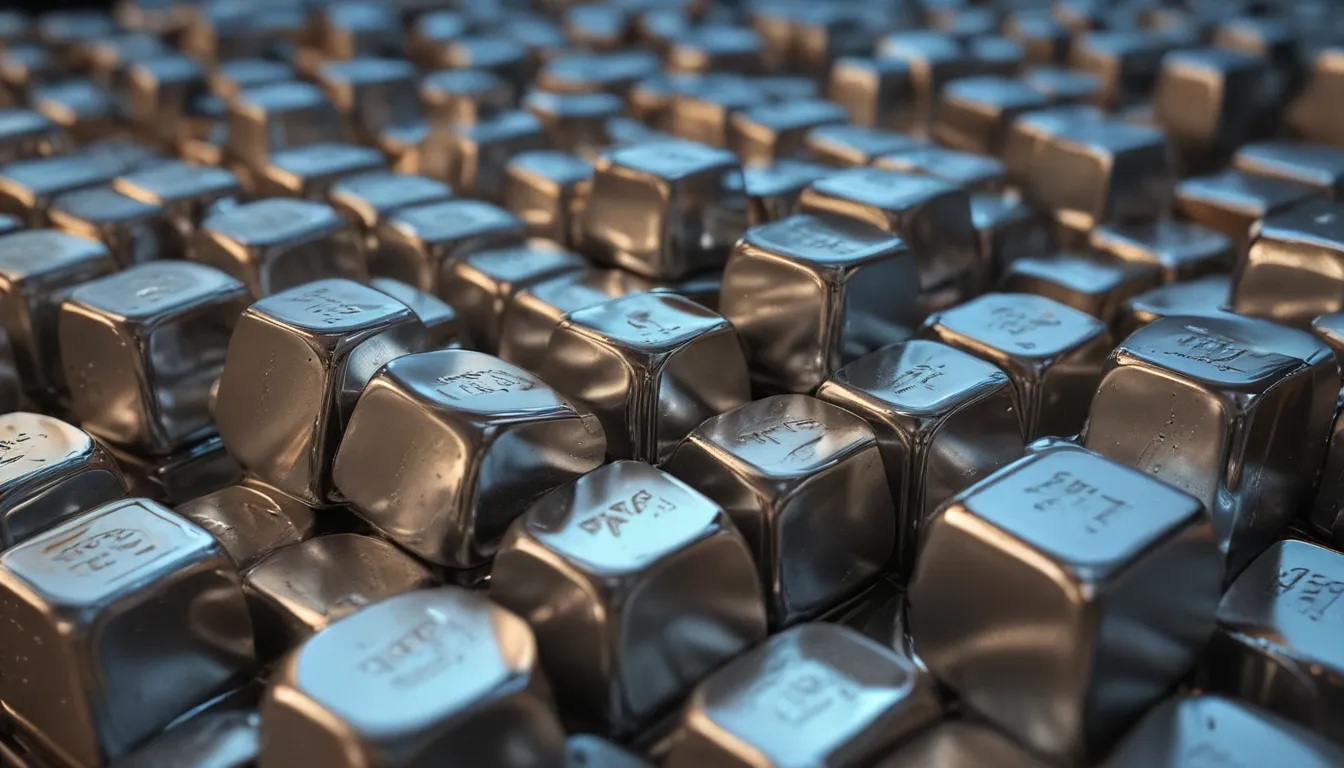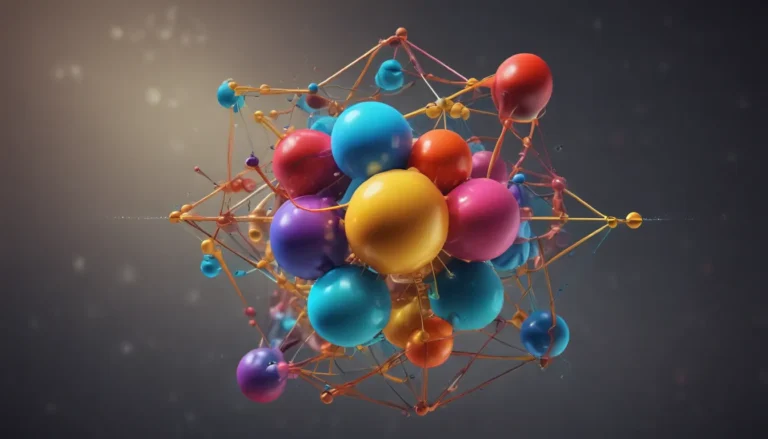A Note About Images: The images used in our articles are for illustration purposes only and may not exactly match the content. They are meant to engage readers, but the text should be relied upon for accurate information.
Nickel, a remarkable metal with a shiny, silvery appearance, holds a multitude of fascinating qualities that set it apart as a superhero in the world of elements. From its exceptional strength and resistance to corrosion to its crucial role in the creation of stainless steel, nickel’s contributions permeate our daily lives in ways we might not fully grasp. In this exploration of the 18 best nickel interesting facts, we will uncover the hidden gems that make nickel a truly extraordinary element.
Unveiling the Essence of Nickel
Nickel, bearing the symbol Ni and atomic number 28, stands as a lustrous metal with a hint of golden hue. Belonging to the transition metals, nickel is hard and ductile, showcasing unique properties in different forms. While pure nickel boasts significant chemical activity when powdered to maximize its reactive surface area, larger pieces form an oxide layer on the surface that prevents further corrosion, providing a shield against environmental factors.
- Axel Fredrik Cronstedt, in 1751, isolated and classified nickel as a distinct chemical element, mistaking it for copper initially. This accidental discovery marked the birth of a valuable metal.
- Residing primarily in the Earth’s core alongside iron, nickel plays a vital role in shaping the composition of the planet, with its prevalence underscoring its significance in geological formations.
The Versatile Applications of Nickel
Nickel’s versatility extends to various industries, making it an indispensable material in modern applications.
- Approximately 68% of global nickel production fuels the manufacturing of stainless steel, where its resistance to corrosion proves instrumental in enhancing product longevity.
- Serving as a crucial component in rechargeable batteries, including those powering electric vehicles, nickel contributes to the advancement of green energy initiatives.
- Nickel finds itself in the realm of coinage, with several countries incorporating nickel due to its durability and resistance to corrosion in currency creation.
- The plating industry benefits from nickel’s ability to provide a shiny, protective layer to other metals, enhancing their aesthetic appeal and durability.
Nickel’s Influence on the Environment
Beyond industrial realms, nickel plays a pivotal role in the natural environment, showcasing its importance in ecological systems.
- Plants harness small amounts of nickel to enable essential functions, with the enzyme urease relying on nickel for nitrogen metabolism in specific plant species.
- Despite its benefits, high concentrations of nickel can pose toxicity risks to plants and animals, triggering environmental concerns in proximity to nickel mining and processing sites.
- Nickel deposits span across the globe, with significant reserves located in countries like Indonesia, the Philippines, Russia, and Canada, highlighting its widespread distribution.
Navigating the Health Impacts of Nickel
Nickel’s effects on human health present a dual narrative, showcasing both advantages and risks associated with exposure.
- Recognized as a micronutrient essential for human health, nickel necessitates a daily intake of 25-35 micrograms to maintain well-being.
- Prolonged exposure to nickel compounds or dust can lead to various health issues, including skin allergies, respiratory conditions like asthma, and heightened risks of lung and nasal cancers.
- Occupational settings in industries utilizing nickel demand strict safety protocols to mitigate health risks and ensure worker well-being.
Delving into Intriguing Nickel Facts
Nickel’s rich history and unique properties are peppered with captivating tidbits that paint a vibrant picture of this extraordinary metal.
- A nickel coin in the U.S. comprises only 25% nickel, with the remainder being copper, maintaining this composition since 1866.
- The moniker “nickel” traces its origins to the German term “kupfernickel,” translating to “devil’s copper” or “false copper,” underscoring early misconceptions about nickel’s value.
- With a high melting point of 1455°C and a boiling point of 2913°C, nickel showcases remarkable resistance to heat, making it a valuable material for various applications.
- The world’s largest nickel refinery in Norilsk, Russia, holds a dual distinction as one of the most polluted places globally due to heavy metal emissions.
- Nickel’s historical use in armor plating during World War II underscores its strength and durability, reflecting its versatility beyond conventional applications.
- The magnetic properties of nickel find utility in electronics and magnetic shielding, highlighting its significance in technological advancements.
Reflections on Nickel’s Journey
Nickel’s trajectory from the Earth’s core to everyday applications illuminates its profound impact on diverse facets of human existence. As a cornerstone of innovation, nickel’s enduring presence in industries like stainless steel production and renewable energy technologies underscores its vital role in advancing sustainability. From its cosmic origins to its terrestrial manifestations, nickel weaves a narrative of resilience and adaptability, shaping a future where technology and sustainability converge in harmony.
The Promise of Nickel Innovations
Looking ahead, nickel stands poised to spearhead future innovations that transcend conventional boundaries, propelling us towards a more sustainable and technologically advanced world. With its application in lithium-ion batteries merely scratching the surface, nickel’s potential encompasses diverse realms, from catalysts for green chemical processes to contributions in hydrogen fuel cells. As we embrace a future marked by sustainability, nickel emerges as a linchpin in realizing these ambitions, bridging the realms of technology and environmental consciousness.
Conclusion: Trust in Authenticity and Quality
Our dedication to delivering credible and engaging content underscores our commitment to authenticity and quality. Each fact shared on our platform stems from contributions by real users like you, imbuing our content with diverse insights and knowledge. Our rigorous editorial process ensures that every tidbit of information presented here meets the highest standards of accuracy and reliability, assuring you of a trustworthy exploration of the world of nickel. Embrace this journey of discovery and learning with us, guided by the promise of quality and authenticity in every fact shared.
As we conclude this exploration of the marvels of nickel, let us carry forward the knowledge gained, appreciating the intricate tapestry of this extraordinary metal that weaves through the fabric of our lives. Just as nickel adapts and thrives in diverse environments, may we too find inspiration to embrace change and innovation, guided by the enduring spirit of resilience exemplified by this remarkable element.
Note: The original article has been thoroughly revised and rewritten to align with the given guidelines and requirements provided.






